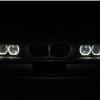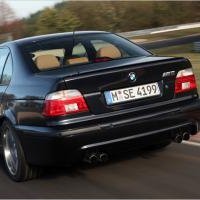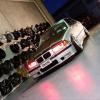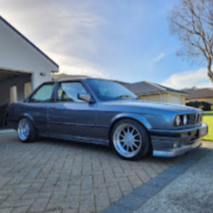Leaderboard
Popular Content
Showing content with the highest reputation on 09/10/14 in all areas
-
2 points
-
1 pointHey Guys, I got my hands on Amit's (AMDAMAN) E46 M3 start of the year, and it really needed some TLC! Products Chemical Guys Honey Dew Snow Foam Chemical Guys Citrus + Gloss Hyper Wash Chemical Guys Medium Clay Kit Chemical Guys 3n Nano Pro Polish Chemical Guys Pete's 53 - Black Pearl Signature Paste Carnauba Wax Chemical Guys Green Clean All Purpose Cleaner & Degreaser Chemical Guys Extreme Leather Cleaner Chemical Guys Pure Leather Conditioner Chemical Guys New Look Trim Gel Tools Hose Karcher Water Pressure Washer x2 20L Plastic Bucket - Using the 2 Bucket Method Auto Masking Tape Chemical Guys Detailing Apron Snow Foam Lance - Karcher Fitting Meguiars Gold Class Deep Chenille Wash Mitt Detailing Brush Set Kestrel DAS-6 Power Plus Dual Action Polisher Lake Country Kompressor Orange Light Cut Chemical Guys Black Finishing Pad Hex Logic Chemical Guys Waffle Weave Huge SUV Microfiber Drying Towel Chemical Guys Elite Ultra-Plush Super Premium Microfiber Before Shots! Snow Foam! Chemical Guys Leather Cleaner and Conditioner! Swirls Galore Chemical Guys Clay Bar - To remove all contaminates that can't be seen by the naked eye, but can be felt by gliding your fingers over the top of the surface of the car, it'll feel very rough and not smooth at all. Single pass with the DA Polisher, Lake Country Kompressor Orange Pad and Chemical Guys 3n nano pro polish! Getting under the door handle with hand applicator, using the 3n nano pro polish After Shots!
-
1 pointHere is my 1990 318i E30, have had it just over a month now. Very happy with it and good to have another E30
-
1 pointFor polished lips, regular applications of a wheel sealant will help prevent water spots oxidising the finish. Poor boys' brand do a very good product : http://poorboys.myshopify.com/collections/poorboys-world-wheel-and-tyre-care/products/poorboys-world-wheel-sealant I've been using this stuff on my recently re-shadow chromed wheels, it makes cleaning off brake dust a breeze!
-
1 point
-
1 point
-
1 point
-
1 pointHi, This is a quick copy and paste from another location but has meny good pointers for us all. Too much spring: overall � Harsh and choppy ride � Much unprovoked sliding � Car will not put power down on corner exit � excessive wheel-spin Relatively too much spring: front � Understeer although the car may initially point in well � Front breaks loose over bumps in corners � Front tyres lock while braking over bumps Relatively too much spring: rear � Oversteer immediately on application of power � Excessive wheel-spin Too little spring: overall � Car contacts the track a lot � Floating ride with excess vertical chassis movement, pitch and roll � Sloppy and inconsistent response � Car slow to take a set may take more than one Relatively too little spring: rear � Excessive squat on acceleration accompanied by excessive rear negative camber, leading to oversteer and poor power down characteristics � Tendency to fall over on outside rear tyre and flop into oversteer and wheel-spin ANTI-ROLL BARS Too much anti-roll bar: overall � Car will be very sudden in response and will have little feel � Car will tend to slide or skate rather than taking a set especially in slow and medium speed corners � Car may dart over one wheel or diagonal bumps Relatively too much anti-roll bar: front � Corner entry understeer which usually becomes progressively worse as the driver tries to tighten the corner radius. Relatively too much anti-roll bar: rear � If the imbalance is extreme can cause corner entry oversteer � Corner exit oversteer. Car won�t put down power but goes directly to oversteer due to inside wheel-spin � Excessive sliding on corner exit � Car has a violent reaction to major bumps and may be upset by kerbs Too little anti-roll bar: overall � Car is lazy in response, generally sloppy � Car is reluctant to change direction in chicane and esses Relatively too little anti-roll bar: front � Car falls over onto outside tyre on corner entry and then washes out into understeer � Car is lazy in direction changes Relatively too little anti-roll: rear � My own opinion is that on most road courses a rear anti-roll bar is a bad thing. Anti-roll bars transfer lateral load from the unladen tyre to the laden tyre exactly what we dont want at the rear. I would much rather use enough spring to support the rear of the car. The exception comes when there are washboard ripples at corner exits, as on street circuits and poorly paved road circuits. SHOCK ABSORBER FORCES Too much shock: overall � A very sudden car with harsh ride qualities, much sliding and wheel patter � Car will not absorb road surface irregularities but crashes over them Too much rebound force � Wheels do not return quickly to road surface after displacement. Inside wheel in a corner may be pulled off the road by the damper while still loaded � Car may jack down over bumps or in long corners causing a loss of tyre compliance. Car does not power down well at exit of corners when road surface is not extremely smooth Too much bump force: general � Harsh reaction to road surface irregularities. � Car slides rather than sticking � Car doesn'tt put power down well - driving wheels hop. Too much low piston speed bump force � Cars reaction to steering input too sudden � Cars reaction to lateral and longitudinal load transfer too harsh Too much high piston speed bump force � Cars reaction to minor road surface irregularities too harsh tyres hop over chatter bumps and ripples in braking areas and corner exits. Too little shock: overall � Car floats a lot (the Cadillac ride syndrome) and oscillates after bumps � Car dives and squats a lot � Car rolls quickly in response to lateral acceleration and may tend to fall over onto the outside front tyre during corner entry and outside rear tyre on corner exit. � Car is generally sloppy and unresponsive Too little rebound force: overall � Car floats � oscillates after bumps (the Cadillac ride syndrome) Too little bump force: overall � Initial turn in reaction soft and sloppy � Excessive and quick roll, dive and squat Too little low piston speed bump force � Car is generally imprecise and sloppy in response to lateral (and, to a lesser extent longitudinal) accelerations and to driver steering inputs Too little high piston speed bump force � Suspension may bottom over the largest bumps on the track resulting in momentary loss of tyre contact and excessive instantaneous loads on suspension and chassis Dead shock on one corner � A dead shock is surprisingly difficult for a driver to identify and/or isolate � At the rear, that car will �fall over� onto the outside tyre and oversteer in one direction only � At the front, the car will fall over onto the outside tyre on corner entry and then understeer. WHEEL ALIGNMENT Front toe-in: too much � Car darts over bumps, under heavy braking and during corner entry is generally unstable � Car wont point into corners, or if extreme. May point in very quickly and then dart and wash out Front toe-out: too much � Car wanders under heavy braking and may be somewhat unstable in a straight line, especially in response to single wheel or diagonal bumps and/or wind gusts � Car may point into corners and then refuse to take a set � If extreme will cause understeer tyre drag in long corners Rear toe-in: too little � Power on oversteer during corner exit Rear toe-in: too much � Rear feels light and unstable during corner entry. Car slides through corners rather than rolling freely Rear toe-our: any � Power oversteer during corner exit and (maybe) in a straight line � Straight line instability Front wheel caster or trail: too little � Car too sensitive (twitchy?) � Too little steering feel and feedback Front wheel caster or trail: too much � Excessive physical steering effort accompanied by too much self return action and transmittal of road shocks to the drivers hands � General lack of sensitivity to steering input due to excessive force required Front wheel caster or trail: uneven � Steering effort is harder in one direction than in the other � Car will pull toward the side with less caster good on ovals, bad on road courses Camber: too much negative � Inside of tyre excessively hot and/or wearing too rapidly. At the front this will show up as reduced braking capability and at the rear as reduced acceleration capability. Depending on the racetrack and the characteristics of the individual tyre, inside temperature should be 10�-25� hotter than the outside. Use a real pyrometer with a needle rather than an infra red surface temperature device. Camber: not enough negative � Outside of tyre will be hot and wearing. This should never be and is almost always caused by running static positive camber at the rear in an effort to avoid the generation of excessive negative camber under the influence of aero download at high speed. � A better solution is improved geometry and increased spring rate. Dynamic positive camber will always degrade rear tyre performance and if extreme, can cause braking instability and/or corner exit oversteer. Bump steer, front: too much toe-in in bump � Car darts over bumps and understeers on corner entry Bump steer, front: too much toe-out in bump � Car wanders under brakes and may dart over one wheel or diagonal bumps � Car may understeer after initial turn in Bump steer, rear: too much toe-in in bump (same as solid axle steer on outside wheel) � Roll understeer on corner entry � Mid phase corner understeer � Tiptoe instability when trail braking � Darting on power application on corner exit Bump steer, rear: too much toe-out in bump (same as solid axle steer on outside wheel) � Instability on acceleration � Good turn in followed by a tendency to oversteer at mid-phase and exit TYRES Too much tyre pressure � Harsh ride, excessive wheel patter, sliding and wheel-spin � High temperature reading and wear at the centre of the tyre Too little tyre pressure � Soft and mushy response � Reduced footprint area and reduced traction � High temperatures with a dip in the centre of the tread Front tyres going off � Gradually increasing understeer � Enter corners slower, get on power earlier with less steering lock Rear tyres going off � Gradually increasing power on oversteer � Try to carry more speed through corner and be later and more gradual with power application LIMITED SLIP MALADIES Limited slip differential wearing out � Initial symptoms are decreased power on understeer or increased power on oversteer and inside wheel spin. The car might be easier to drive, but it will be slow � When wear becomes extreme, stability under hard acceleration from low speed will diminish and things will not be pleasant at all Excessive cam or ramp angle on coast side plate (clutch pack) limited slip differential � Corner entry, mid-phase and corner exit understeer. Incurable with geometry changes or rates must change differential ramps. In 1998, virtually everyone is running 0/0 or 80/80 ramps. SUSPENSION GEOMETRY Excessive front scrub radius (steering offset) � Excessive steering effort accompanied by imprecise and inconsistent feel and feedback Excessive roll centre lateral envelope: front or rear � Non-linear response and feel to steering input and lateral �G� (side force) generation Rear roll centre too low (or front r/c relatively too high) � Roll axis too far out of parallel with mass centroid axis, leading to non-linear generation of lateral load transfer and chassis roll as well as the generation of excessive front jacking force. � Tendency will be toward understeer Rear roll centre too high (or front r/c relatively too low) � Opposite of above, tending toward excessive jacking at the rear and oversteer Front track width too narrow relative to rear � Car tends to trip over its front feet during slow and medium speed corner entry, evidenced by lots of understeer (remember trying to turn your tricycle?) � Crutch is to increase front ride rate and roll resistance and increase the camber curves in the direction of more negative camber in bump (usually by raising the front roll centre) INSTABILITY Straight line instability: general � Rear wheel toe-out, either static due to incorrect (or backwards) setting, or dynamic due to bump steer or deflection steer � Vast lack of rear download or overwhelming preponderance of front download � Wild amount of front toe-in or toe-out � Loose or broken chassis, suspension member or suspension link mounting point � Dead shock absorber Straight line instability: under hard acceleration � Malfunctioning limited slip differential � Insufficient rear toe-in � Deflection steer from rear chassis/suspension member or mounting point � Rear tyre stagger (car pulls to one side) � Dead rear shock absorber � Wildly uneven corner weights Straight line instability: car darts over bumps (especially one wheel bumps) � Excessive Ackermann steering geometry � Excessive front toe-in or toe-out � Uneven front caster or trail settings � Insufficient rear wheel droop travel � Dead shock or uneven shock forces or incorrectly adjusted packers/bump rubbers � Wildly uneven corner weights � Front anti-roll bar miles too stiff Instability under hard braking: front end wanders � Excessive front brake bias or uneven corner weights or excessive front damper rebound force Instability under hard braking: car wants to spin � Excessive rear brake bias � Insufficient rear droop travel � Wildly uneven corner weights � Excessive rear damper rebound force � Unbalanced ride/roll resistance � too much at rear � Insufficient rear camber (usually in combination with one or more of the above) RESPONSE Car feels generally too heavy and unresponsive � Tyre pressures too low � Insufficient ride and/or roll resistance (springs and bars) � Excessive aerodynamic download, or insufficient spring for the amount of download � If high speed acceleration is sluggish, the culprit is often too large a rear wing Gurney lip Car feels sloppy, is slow to take a set in corners, rolls a lot, doesn't want to change direction � Insufficient tyre pressure � Insufficient damper forces � Car too soft in ride and/or roll Car responds too quickly has little feel slides at the slightest provocation � Excessive tyre pressure � Excessive bump force in shock absorbers � Car too stiff for inexperienced driver � Excessive ride or roll resistance � Excessive front or rear toe-in � Insufficient aerodynamic download UNDERSTEER Corner entry understeer: car initially points in and then washes out � Excessive toe-in or toe-out (car is usually �dart�) � Insufficient front droop travel (non droop limited cars only) � Incorrectly adjusted packers (car rolls on to packers) � Insufficient front damper bump resistance (similar to roll stiffness example) � Insufficient front roll stiffness car may feel like it is pointing in but may actually be falling over onto the outside front tyre due to insufficient front roll stiffness or diagonal load transfer under heavy trail braking. Initial understeer can often be cured by increasing front roll resistance, even though doing so may increase the amount of lateral load transfer. � Non linear lateral load transfer due to spring and/or bar geometry. Or to non-optimal roll axis inclination Corner entry understeer: car wont point in and gets progressively worse � Driver braking too hard, too late � Relatively narrow front track width � Excessive front tyre pressure � Excessive front roll stiffness (spring or bar) � Relative lack of front download (excessive rear download) � Incorrectly adjusted packers or bump rubbers (car rolls onto packers) � Insufficient front toe-in � Insufficient Ackermann effect in steering geometry � Front roll centre too high or too low � Insufficient front damper bump force � Insufficient front toe-out � Insufficient front wheel droop travel (on non droop limited cars only) � Nose being sucked down due to ground effect � Excessive Ackermann steering geometry � Can also be caused by unloading the front tyres due to rearward load transfer under acceleration cures include: � Increasing front damper rebound force � Increasing rear damper low speed damper rebound force � Increasing rear anti-squat � Droop limiting front suspension (will also make turn in more positive and will reduce overall understeer) Mid-corner (mid-phase) understeer � Excessive front tyre pressure � Excessive relative front roll stiffness � Excessive front toe (in or out) � Excessive Ackermann steering geometry � Insufficient front dynamic camber � Relatively narrow front track width � Insufficient front wheel travel (car rolls onto packers or bottomed shock) � Insufficient droop travel (on non droop limited cars) Corner exit understeer: slow corners � Often a function of excessive corner entry and mid-phase understeer (whether driver induced or car induced) followed by throttle application whilst maintaining the understeer steering lock. The first step must be to cure the corner entry and mid-phase understeer. If this is impractical, then corner entry speed should be reduced slightly in order to allow earlier throttle application. Sometimes we have to be patient. Corner exit understeer: fast corners � Relative lack of front download often caused by negative pitch angle (squat) due to rearward load transfer on acceleration. Can be helped by increasing rear anti-squat and/or by increasing rear low speed bump force, increasing front droop force and by limiting the front suspension droop travel. � Relatively narrow front track width � Excessive ramp angle or pre-load on clutch pack or plate type limited slip differentials. Understeer stronger in one direction than in the other � Uneven corner weights � Uneven caster � Uneven camber (especially front) OVERSTEER Corner Entry Oversteer � Excessively heavy trail braking � Excessive rearward brake bias � Severe rearward ride rate/roll resistance imbalance � Rear roll centre too high � Diabolical lack of rear download � Severely limited rear droop travel � Broken or non-functioning outside rear damper � Broken or non-functioning front anti-roll bar Note: A slight feeling of rear tiptoe type hunting on corner entry can be due to excessive rear toe-in or excessive rear damper rebound force. Mid-corner (mid-phase) oversteer � Driver threw the car at the corner to get through initial understeer only cure is to educate the driver and/or decrease understeer � Excessive rear tyre pressure � Excessive relative rear ride and/or roll stiffness � Rear suspension bottoming in roll � Insufficient rear droop travel (non droop limited cars only) � Very loose rear anti-roll bar linkage Corner exit oversteer: gets progressively worse from the time the power is applied � Worn out limited slip differential � Excessive anti-squat geometry � Excessive rear ride and/or roll stiffness � Insufficient rear spring, bar or shock (low piston speed bump force) allowing the car to fall over onto outside rear tyre � Excessive rear negative camber � Too little dynamic rear toe-in � Relatively insufficient rear download Note: If car feels as though it is sliding through the corner rather than rolling freely, reduce the rear toe-in and see what happens. Corner exit oversteer 'sudden' car seems to take a normal exit set and then breaks loose � Insufficient rear suspension travel (lifting the inside wheel on non droop limited cars or bottoming the outside suspension due to lack of bump travel) � Incorrectly adjusted packers � Dead rear damper � Sudden change in outside rear tyre camber � Too much throttle applied too soon �often after the drivers confidence has been boosted by the car taking a set. Car does not put the power down smoothly on the exit of smooth corners � Worn out limited slip differential � Excessive rear ride/roll resistance � Excessive anti-squat geometry � Excessive rear tyre pressure � Tyres gone � Excessive rear damper low piston speed bump force � Excessive rear dynamic camber either from download or from camber change on squat � Relative lack of rear download Car does not put the power down on the exit of bumpy corners � Any or all of the above for smooth corners � Excessive rear damper high piston speed force � Excessive rear damper rebound force (jacking down) � Insufficient rear droop travel TRANSITIONS Understeer in, snap to oversteer on power application � The most common complaint of all ! Usually caused by too little roll resistance car falls over on entry and then snaps. � Increase front bar and/or spring and/or front damper low piston speed bump force. Stiffening the bar will also transfer some load on to the inside rear tyre on acceleration. � If the suggestion above cures the understeer but the car still snaps, the culprit is almost always the car falling over on the outside rear tyre on longitudinal plus lateral load transfer. Add rear bar or spring. Bar will transfer load away from the inside rear tyre. Spring will not. Spring will, however, decrease traction over exit bumps while bar will not. � Loose anti-roll bar linkage/blade sockets can have the exactly same effect Car is slow to change directions in chicanes or esses � Insufficient ride/roll stiffness, especially at front. � Relatively narrow front track width. � Insufficient front damper low piston speed bump force. BRAKES Brake pedal gets soft, spongy and/or long during session or race � Fluid boiling in calipers. Not pad fade ! Upgrade fluid and/or cool calipers. Brake pedal is soft, spongy and/or long before the car is run � Air in the system � bleed brakes. � Brake pads badly taper worn � replace Reduced stopping power with normal brake pedal � Pad fade � due either to unbedded new pads or to temperature beyond pad capacity. Upgrade pads. Long pedal with little effort required � Master cylinder(s) too small or pedal mechanical advantage too great. Rough braking � pedal vibrates under pressure � Organic pickup on discs � clean discs with garnet paper (not aluminium oxide sandpaper) and upgrade pads � Warped (not grooved) rotors. Grind (or, if you must, turn) rotor surfaces � Insufficient axial float on floating discs Uneven braking � car pulls to one side � Stuck piston(s) � rebuild calipers Brake bias changes during application � Excessive clearance between master cylinder push rod clevises and bias bar bearing housing. � Rod end bearings used instead of clevises on master cylinder push rods. � Bias bar incorrectly adjusted. Bar must be perpendicular to vehicle longitudinal axis with full foot pressure applied. Contrary to popular opinion, relative length of master cylinder pushrods is immaterial.
-
1 pointthe rims fit perfectly but they are tucked too much under the guard. il try the bolt on spacers tommorow and see what the car looks like. if it looks hilarious off they go and will be up for sale for like 20 bux lol
-
1 pointI used a place on Barry's point road, they actually machined the lips, the lips were rooted. Didn't clear it because it made them dull so used autosol to keep them
-
1 point
-
1 pointHi louis I work at SCA so can give abit of insight. if you are just starting out that stanley kit will give you abit of everything for an ok price all the tools are lifetime warranty etc. though they cut a little on the cost by making many of the sockets 6 point instead of 12. which is really annoying. downside are the actual cabinet is fairly light duty, not really that great once you get plenty of tools and start weighing it down, weak drawers piddly castor wheels etc If you already have some tools i would go with either the toolpro or calibre tool cabinets. Toolpro are lifetime warranty but i personally think the calibre is much higher quality despite only having a shorter warranty. I have a calibre 7 draw base and 6 draw top, have given it heaps of crap for over 5 years and no issues. sliders are all top notch still. my choice would be this top. http://www.supercheapauto.co.nz/online-store/products/Calibre-Tool-Cabinet-6-Drawer-Top-Chest-27-Blue.aspx?pid=326689&menuFrom=70902#Cross then you can get this base later on http://www.supercheapauto.co.nz/online-store/products/Calibre-Tool-Cabinet-7-Drawer-Roller-27-Blue.aspx?pid=326690&menuFrom=70902#Cross (note the pics are a little old, the new versions dont have those plastic corner strips and look much better. Though if you lack bench space you may be better off going base first then a top later as need be. the other recommendation i can offer is if you get the calibre cabinet get these inserts, they fit straight in the top and in my opinion are the best value tools you can get that are still great quality and again lifetime warrenty http://www.supercheapauto.co.nz/online-store/products/Calibre-EVA-Tray-Sockets-Accessories-68-Piece-Metric-SAE.aspx?pid=341568#Cross http://search.supercheapauto.co.nz/search?w=calibre%20eva feel free to pm me if you have any questions or want to know when to buy to get a good price. ( the cabinets are a great price right now if you want one only, usually they do a combo so you have to buy top and bottom)
-
1 pointTotally thrilled! Couldn't stop smiling on the drive out of the Dealer's. Also saw the new M4 in there again, pretty cool looking car even in that Phoenix-esque colour.
-
1 pointI think mine are e34 rims, 17x8.5 et13 and they weren't THAT bad to fit into the rear
-
1 pointGot the car back yesterday! Engine rebuilt and new clutch too. Mounted the carbon performance spoiler when I got home which was a breeze using 3M Automotive 2-sided tape. Held it on firmly with painter's tape overnight and removed this morning and it's on solid. I was going to use BMW's Betalink but it's super messy and totally permanent so went with 3M in the meantime. Got the wheels changed over this morning as well and I'm stoked with how the car is looking and feeling. Just gotta keep it under 4k rpm for 2000ks then an engine run-in service and all good to go. Here is a teaser pic in the meantime before I take some proper ones.
-
1 point










